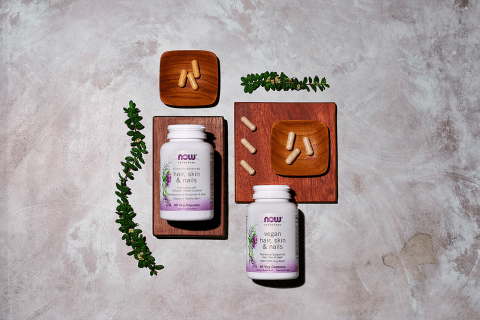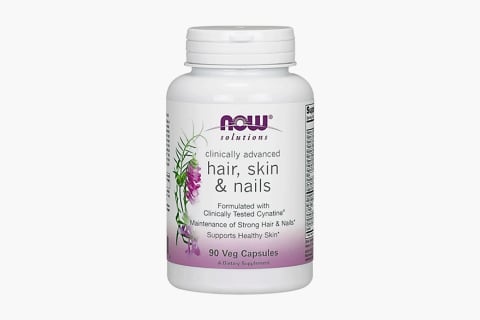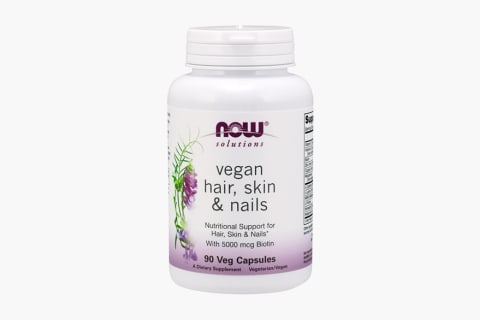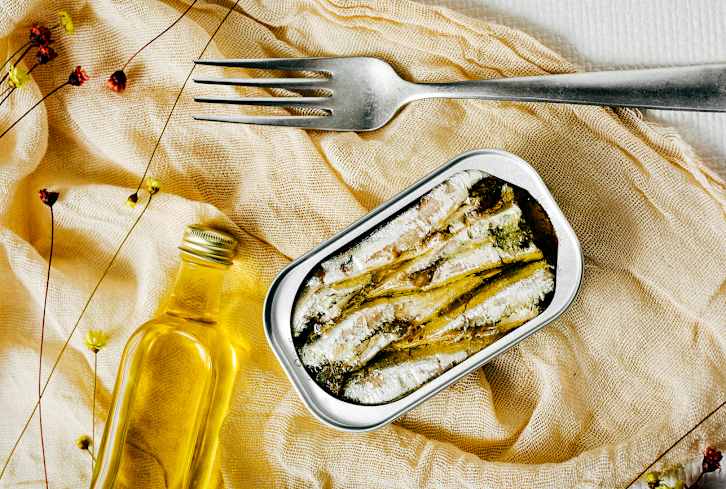Advertisement
8 Things Your Nails Are Trying To Tell You About Your Health

Here at mbg, we believe that beauty isn't superficial—it's something that builds from the inside out. Which is to say that our hair, skin, and nails can tell us a lot about what's happening beneath the surface.
Our fingernails in particular, from their texture and shape to strength and color, can often give us clues when something's off or not quite right. Take a minute to really look at your nails, and you might discover there's more complexity to them than simply whether or not they're in need of a manicure. (And if you do notice any significant changes, like dark discolorations, swelling, or changes in the shape of the nail, see a dermatologist or health care provider right away.)
How do your nails feel texture-wise?
Pitted: Your nails should feel smooth and strong—so watch out for any pitting or dents on the nails' surface. This symptom may signal psoriasis1, a chronic skin condition that causes an itchy rash.
Vertical ridges: Ripples appearing lengthwise up and down your nails are pretty common as we age2, so normally there's nothing to worry about. Fingernails are made mostly of keratin, a protein also found in the hair and outer layer of skin. Similar to our hair and skin feeling rougher and drier as we get older—all thanks to our bodies having a harder time retaining moisture—our nails change, too. Taking a biotin-rich supplement like NOW® Solutions Hair, Skin & Nails, which features a clinically advanced bioavailable form of keratin, is an easy way to help skin retain its youthful moisture and elasticity and keep nails growing healthfully.*
Horizontal ridges: With deep, side-to-side ripples in the nail—also called Beau's lines—have your doctor take a look. These grooves across your nails could indicate that an underlying systemic condition may be halting your normal nail growth.

What's the color situation?
Yellow nails: Often, yellow discoloration is just your nail reacting to a product you're using, like nail polish or acrylic nails. If you're all about weekly manicures and nail art, give your nails a breather (experts suggest no more than two manicures a month)—and swap in tea tree oil or vitamin E to help nourish your nails naturally. If they don't grow in clear, the yellowish tint may be caused by something else, like a fungal infection.
White spots: A tiny trauma (i.e., smacking your finger against the table—ouch) is often the likely culprit of light-colored spots on the nail, called punctate leukonychia. Thankfully, they'll eventually disappear. Just have patience—it takes about six months to grow a new fingernail from start to finish. But if the spots continue to stick around, check in with your doctor: There may be an underlying issue, like a zinc deficiency, at play.
Black streaks: This is a serious one—see your doctor right away if you notice any dark or black discoloration on your nails, especially if it feels painful. Melanoma can sometimes cause black lines or stripes to appear on the nail, so pay attention to this clue if skin cancer runs in the family.
How strong are your nails?
Soft or weak: If your fingernails feel so thin or flimsy that you can bend them, you might blame constant exposure to moisture or chemicals like detergents and acetone-containing nail polish removers.
Help keep your nails strong and flexible every day by fortifying them with nourishing B vitamins from NOW® Solutions Hair, Skin & Nails supplement, which is also available in a vegan formula that delivers the essential amino acids and minerals needed to produce keratin and collagen for healthy nails.* A pair of gloves while washing dishes helps, too!
Brittle or peeling: Nails that chip or feel dry and brittle could be a sign of iron-deficiency anemia, and nails that are always peeling or splitting could mean you just need to up your iron intake—think red meat, molasses, or using an iron skillet to cook food. (An iron deficiency can also trigger changes in nail texture or shape, making them concave, or spoon-shaped.)





















